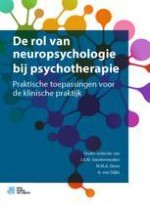Samenvatting
In dit hoofdstuk wordt de dynamiek van emoties, kwetsbaarheid en veerkracht na het doormaken van een cerebrovasculair accident (CVA) belicht. Door veranderingen in de hersenen reageert men anders of zijn de cognitieve gevolgen van het CVA van invloed binnen de therapie. Besproken wordt hoe deze veranderingen kunnen worden getaxeerd en geconceptualiseerd, en op welke wijze een psychotherapeut binnen de therapie rekening kan houden met deze factoren. Ook worden handvatten gegeven hoe een psychotherapeut veerkracht kan bevorderen als deze ontbreekt of sterk onder druk staat. Ten slotte komen in dit hoofdstuk twee specifieke terreinen aan de orde waarop CVA-patiënten zich regelmatig kwetsbaar voelen, namelijk: leven tussen hoop en vrees, en angst voor een recidief.
